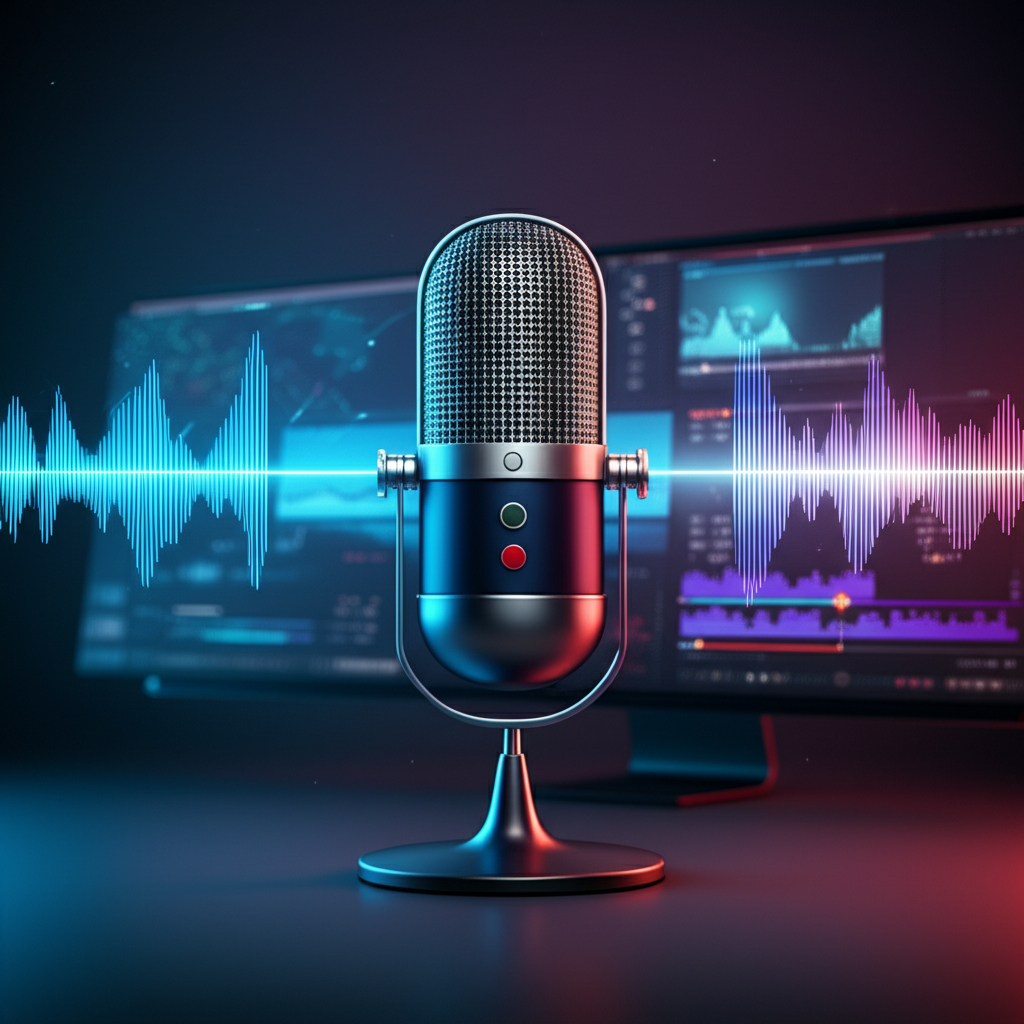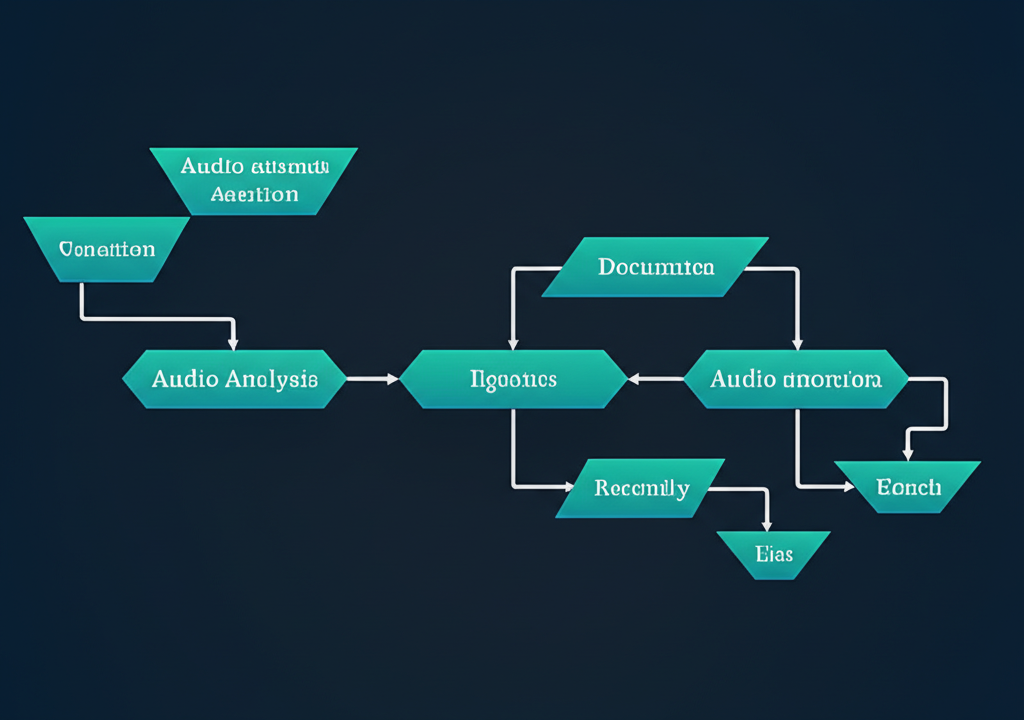
Categories:
- Artificial Intelligence in Media
- AI Content Creation Tools
- Future of Video Production
- Multimedia Technology Trends
Tags:
- audio to video ai
- AI video generation
- intelligent video editing
- AI audio tools
- automated content creation
- future of multimedia
- creative AI
Introduction
In the ever-evolving landscape of digital content, Audio to Video AI stands out as a transformative force. This technology leverages artificial intelligence to automate and enhance the process of creating videos from audio sources, opening up new frontiers for creativity, efficiency, and accessibility. This article explores how AI is revolutionizing audio-to-video workflows, the key benefits, the leading AI-powered tools, and what the future holds for this exciting domain.
What is Audio to Video AI, and How Does It Work?
Audio to Video AI refers to a suite of technologies where artificial intelligence algorithms analyze audio input (speech, music, sound effects) and then automatically generate or synchronize relevant visual elements to create a video. This can involve:
- AI-Powered Audio Analysis: Understanding sentiment, key topics, speaker identification, or musical beats within the audio.
- Automated Visual Selection/Generation: Selecting appropriate stock footage/images, generating abstract visualizations, creating animated avatars from text or voice, or even crafting novel scenes based on audio cues.
- Intelligent Synchronization: Ensuring visuals align perfectly with audio timing, emotional tone, and narrative flow.
- Voice Cloning & AI Narration: Generating realistic voiceovers from text to accompany visuals, or cloning voices for consistent narration.
Core Benefits of Leveraging Audio to Video AI
Integrating AI into your audio-to-video workflow offers distinct advantages:
- Unprecedented Speed and Scalability: AI can generate video content from audio in minutes, a task that would take humans hours or days. This allows for mass production of video content (e.g., converting entire podcast backlogs).
- Significant Cost Reduction: Reduces reliance on extensive video production teams, expensive software, and stock media subscriptions for certain types of content.
- Democratization of Creativity: Empowers individuals and small businesses without video editing expertise or large budgets to produce professional-looking video content.
- Novel Creative Possibilities: AI can generate visuals or audio-visual combinations that might not be intuitively conceived by human creators, leading to innovative content forms.
- Personalization at Scale: Potentially allows for dynamic tailoring of video content based on audio variations or user data.

Top AI-Powered Tools for Audio to Video Creation
The market for audio to video AI tools is rapidly expanding. Here are some prominent examples:
| Tool Name | Key AI-Driven Features | Best For |
|---|---|---|
| AudioX | AI audio generation from text/image/video, intelligent soundscaping, seamless video integration | Creators needing unique, AI-generated audio perfectly synced with visuals. |
| Synthesia | AI avatar creation from text, voice cloning, multi-language support | Corporate training, educational videos, marketing. |
| Lumen5 | AI-powered text-to-video (blog posts to videos), automated visual selection, branding customization | Marketers, bloggers repurposing written content. |
| Descript | AI-powered transcription, overdub (voice cloning for corrections), AI-assisted video editing (editing transcript edits video) | Podcasters, interviewers, educators. |
| Pictory.ai | AI video creation from scripts or articles, auto-visual selection, voice-over generation. | Content marketers, YouTubers, social media. |
| RunwayML | Suite of AI magic tools including text-to-video, video-to-video, AI audio cleanup. | Creatives exploring experimental AI media generation. |
How Audio to Video AI Works: A Simplified Process
- Input: User provides an audio file, a script for AI narration, or descriptive text for AI audio/visual generation.
- AI Processing: The AI engine analyzes the input. For audio, it might detect beats, emotion, or keywords. For text, it processes language for meaning and tone.
- Visual/Audio Generation & Synchronization: Based on the analysis, the AI selects stock media, generates new visuals (like avatars or abstract graphics), creates an AI voiceover, or composes music. It then intelligently syncs these elements.
- Output & Refinement: The AI produces a draft video. Many tools allow users to then refine the output, change visuals, or tweak timing.

Expert Insights on the AI Revolution in Media
"Audio to Video AI is not just about automation; it's about augmentation. It empowers creators to achieve more, experiment faster, and reach audiences in compelling new ways." - Dr. Aris Thorne, AI Media Researcher.
"The real game-changer with these AI tools is the ability to personalize video content at a scale previously unimaginable, opening doors for hyper-targeted marketing and education." - Jasmine Lee, Digital Content Innovator.
Use Cases for Audio to Video AI
- Podcast to Video Conversion: Automatically create engaging videos from podcast episodes using waveform animations, speaker visuals, or AI-selected imagery.
- Blog Post/Article to Video: Transform written content into shareable videos with AI narration and relevant visuals.
- Educational & Training Videos: Generate instructional videos with AI avatars and voiceovers from scripts.
- Marketing & Social Media Content: Quickly produce promotional videos, product explainers, or social snippets with AI-generated audio and visuals.
- Music Visualization: Create dynamic music videos with AI-generated visuals that react to the beat and mood of the music.
Tips for Effectively Using Audio to Video AI Tools
- Provide Clear & Detailed Input: The more specific your audio or text input, the better the AI can interpret your intent and generate relevant content.
- Understand Tool Capabilities & Limitations: Each AI tool has strengths and weaknesses. Choose one that aligns with your specific project needs.
- Iterate and Refine: Use the AI-generated output as a starting point. Most tools allow for manual adjustments to perfect the final video.
- Maintain a Human Touch: While AI offers incredible efficiency, ensure your final content aligns with your brand voice and quality standards. Review and edit as needed.

Future Trends in Audio to Video AI
The field is evolving rapidly. Expect to see:
- More Realistic AI Avatars and Voices: Increasingly lifelike and customizable digital humans.
- Improved Contextual Understanding: AI that better grasps nuance, emotion, and complex narratives in audio to create more sophisticated visuals.
- Real-time Generation: AI creating audio-visual experiences on the fly, perhaps for interactive applications.
- Generative Video from Text/Audio: AI creating entirely novel video scenes from scratch based on descriptions or audio input, beyond just stock media.
- Ethical AI Development: Greater focus on responsible AI, addressing issues like deepfakes, bias, and copyright.
FAQs: Audio to Video AI Explained
1. Do I need coding skills to use audio to video AI tools?
No, most modern audio to video AI tools are designed with user-friendly interfaces, requiring no programming knowledge.
2. Can AI truly understand the emotion in my audio to create matching visuals?
AI is getting progressively better at sentiment analysis and emotional cue detection from audio, leading to more tonally appropriate visual suggestions. However, it's not always perfect and may require human oversight.
3. What are the copyright implications of using AI-generated audio or visuals?
This is an evolving legal area. Generally, if the AI tool uses licensed stock media, the rights are covered. For fully AI-generated content, the terms of service of the AI tool will specify usage rights. Always check these terms.
4. How can AudioX help specifically with AI-driven audio-to-video?
AudioX excels at generating unique, high-quality AI audio (music, soundscapes, voice) from various inputs and seamlessly integrates this into video, offering a streamlined workflow for creators who want distinctive sound for their visual projects.
5. Will AI replace human video editors and creators?
AI is more likely to be an assistive tool that augments human creativity and handles repetitive tasks, rather than a full replacement. It allows creators to focus on higher-level storytelling and strategy.
Conclusion
Audio to video AI is undeniably reshaping the landscape of content creation. By automating complex tasks, reducing costs, and unlocking new creative avenues, AI empowers creators of all levels to produce compelling video content more efficiently than ever before. As these technologies continue to mature, their integration into our digital lives will only deepen, making it an exciting time for innovation in multimedia.
Call-to-Action
Ready to experience the future of content creation? Explore AudioX and harness the power of AI to generate unique audio and integrate it into stunning videos. Start your creative revolution today!
Social Media Snippet:
🚀 AI is changing how we create video from audio! Dive into the world of Audio-to-Video AI: top tools, benefits, and what's next. #AudioToVideoAI #AIContentCreation #FutureTech
Suggested Internal Links:
(User: Please replace # with actual relevant links from your site, e.g., to AudioX's AI features page or specific tutorials)
- The Science Behind AudioX's AI Audio Generation
- Use Cases: How AI in AudioX Transforms Projects
- Ethical Considerations in AI Media Creation
Suggested External Links:
(User: Consider linking to 1-2 reputable sources discussing AI in media, ethical AI, or future tech trends from organizations like MIT Technology Review, Wired, or research institutions.)
By following these guidelines and crafting engaging, informative content, you can effectively capture the interest of your target audience while maximizing your SEO efforts.